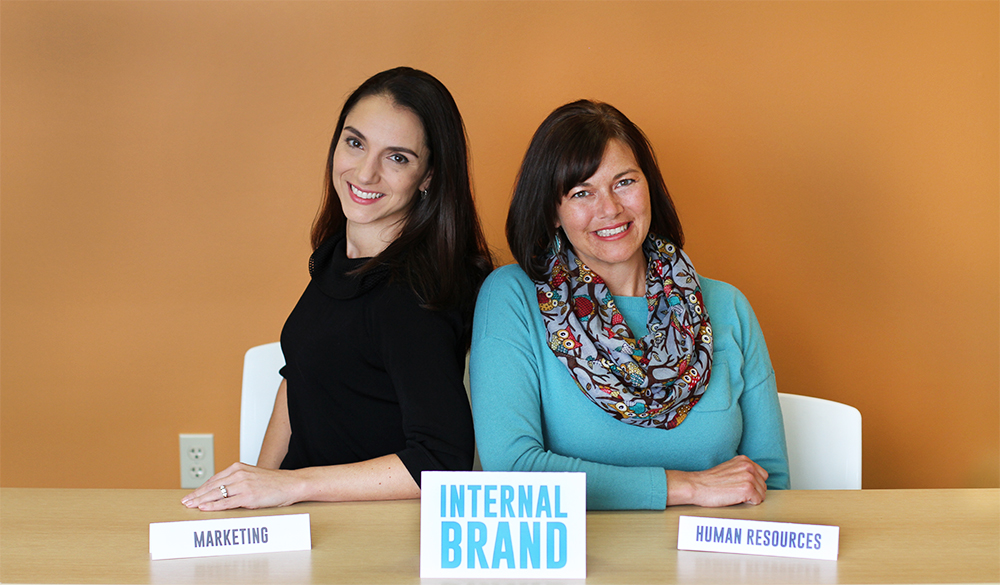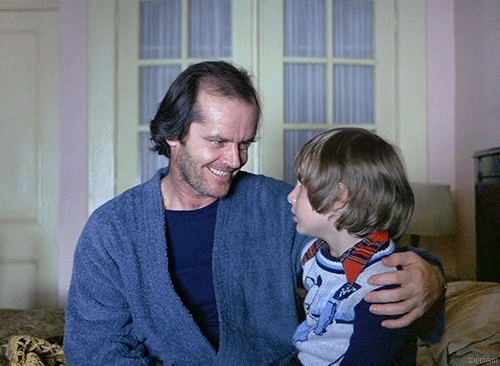
Branding, Communication, Strategy
7 Essential Tips for Building a Memorable Brand Identity
In today’s crowded market, having a memorable brand identity is more than just a nice-to-have—it’s a must. A strong brand identity not only sets you apart from competitors but also creates a lasting impression on your audience. Here are seven essential tips to help you build a brand identity that sticks.
1. Define Your Brand Purpose and Values
Your brand purpose and values are the heart of your identity. Take the time to articulate why your brand exists and what it stands for. This will guide all your branding decisions and ensure that everything you do is aligned with your core principles.
2. Know Your Audience Inside and Out
Understanding your audience is crucial for creating a brand that resonates. Conduct thorough market research to identify who your ideal customers are, what they care about, and how your brand can meet their needs.
3. Create a Distinctive Visual Identity
Your visual identity, including your logo, color palette, typography, and design elements, should be unique and instantly recognizable. Work with a designer who understands your brand vision and can bring it to life in a cohesive way.
4. Develop a Consistent Brand Voice
Your brand voice is how you communicate with your audience, and it should be consistent across all channels. Whether your tone is professional, friendly, authoritative, or playful, make sure it reflects your brand’s personality.
5. Tell a Compelling Brand Story
People connect with stories, not products. Craft a brand story that highlights your journey, mission, and the value you bring to customers. This narrative should evoke emotion and make your brand relatable.
6. Ensure Consistency Across All Touchpoints
From your website and social media to your packaging and customer service, every interaction a customer has with your brand should feel consistent. A cohesive brand experience builds trust and reinforces your identity.
7. Regularly Review and Adapt Your Brand Strategy
Your brand identity isn’t set in stone. As your business evolves, so should your branding. Regularly review your brand strategy to ensure it aligns with your current goals and market trends.
Building a memorable brand identity takes time, effort, and a clear vision. By following these tips, you can create a brand that not only stands out but also builds strong connections with your audience.

Branding
By Molly Mason, CBO and Certified Brand Strategist
The Good
In my younger years, I spent a fair amount of time wandering around the racks at the video store, picking up plastic rectangle boxes to read the description of the movie it contained and then checking them out to take home and (hopefully!!) bring back by the due date given.
It has not been a characteristic of my life to be an early adopter. I prefer letting other people test things out with their own time and/or money before I invest my own. However, I was an eager early adopter of a little startup that would send me DVDs through the mail and not penalize me for failing to return them on time. Those little red Netflix envelopes floated all around our home for years until we could finally stream it through our computers on our nifty DSL connection. My, those were the days.
For the majority of my adult life, Netflix has been our only form of television. My children have grown up with Netflix. Which is why a recent event was truly memorable for me. It instantly deflated my confidence in and love for their brand. It tore down years of loyalty within the span of 5 minutes. It taught me an extremely valuable lesson on the incredible power brands yield in the minds and hearts of their customers.
The Bad
One evening I was pulling up my account. Suddenly, loud music began playing and an actress’s voice began asking her counterpart very personal and sexual questions – things it would be inappropriate for our kids to hear at their ages and frankly not something I wanted to hear either. I was more than a little irked. These are the questions that ran through my mind:
- Why would Netflix think I would like this? (If it knows my viewing history, wouldn’t it know that I would not likely watch this type of show?)
- Why is it auto-playing? Can I change that because it’s annoying no matter what it’s playing.
- Is this auto-playing on my kids’ accounts? (Again, what about the algorithm?)
The answer? That show was auto-playing on all of our accounts except our youngest – who has a kids account. Through a brief chat with Netflix technical support, I learned that auto-play is a feature I cannot turn off. Further research showed that I was not the only one annoyed by this new feature. A quick internet search revealed articles complaining about the auto play feature for the past year. One writer, Kirk Hamilton, summed it up nicely. “We’re already paying for your service. You don’t need to advertise your own programming to us, and you definitely don’t need to advertise to us in such an aggressive and unavoidable way.”
Since then, I have increasingly noticed that the shows Netflix recommends for me really don’t match my preferences at all. I have begun playing the game of trying to scroll faster than Netflix can auto-play so I can get to our recently watched and continue viewing our new favorite show with no annoying disruptions.
The Ugly
I reflected on what I loved about Netflix and what had changed.
- It used to understand me. It showed me things I might like based on my history. Promoting their own shows now seems to be more important than helping me discover new shows that might actually fit my taste.
- I didn’t have to worry about annoying commercials. Now they are showing me annoying previews of shows I would never watch.
- It was a place my kids could explore within boundaries. Now I have to be concerned that it’s showing my kids things that are inappropriate for their ages.
- I trusted them and loved them. I am now a skeptic and eager to find a better option.
This experience left me feeling abandoned by a brand I loved and trusted. I am a number. I am a part of their revenue stream. It killed my loyalty faster than any other mistake they could have made. Netflix has made it easy to turn me into a former customer. Instead of touting my love for them to my friends and family, I am more likely to share my growing dislike.
What does this mean for a brand? When other things become more important than understanding, loving, and providing value to their customers, the brand is starting down the path of mediocrity and opening the door to its competitors. It’s easy to take customers away from a service that is annoying. It’s hard to steal customers away from brands they love.
“You are not important. You are not of value to me.” Brands say this every day to their customers. Restaurants say it to their patrons through mediocre service and poor hiring and training practices. The government says it by implementing new systems that promise greater efficiency but really just add ten steps to processes that used to take two (I’m talking to you Michigan Secretary of State Department). Netflix says it through auto-play and recommendations that are not about their customer’s preferences and don’t enhance their experience with the brand.
Put your customers last and they will eventually return the favor.

Branding, Human Resources

By Sarah Stanley, CEO of Hoyden Creative Group and Amy Bergman, President of Insight HRM
If you have been involved in hiring, you’ve surely seen some bumpy rides for both the new hire and the organization. Ready to do better? Call in the HR reps, you might think. Yes, but here’s when two heads are better than one. If you also call in your brand strategist, you can make some real magic happen. Allow them to work side by side so that your brand is alive and well throughout the organization, obvious to a new employee the very first day on the job. It’s good for you, the new hire, and the success of the organization as a whole.
There is so much that can be done. What’s not working for you, and how can you turn it around? Here are four areas where you can start making high-impact changes in your hiring process.
What’s Not Working: You are Hasty in Creating a Job Description
A quickly slapped together job description with pieces borrowed from many different sources will feel like just that. It leaves you with a hodge-podge of listings that lack the consistency and flavor of your organization. Absence of a fluid and accurate job description sets everyone up for failure from the get-go. You won’t be able to spot a well-qualified candidate because you don’t have the right baseline for evaluation in place.
Change it to a Job Description that Works
Take time to think about the role for which you are hiring. How does this role support the organization’s strategic initiatives? How will the new hire feel and contribute to the company culture? Identifying with the culture is how they will know they are engaged with the corporate brand, and employee engagement with the brand is critical for the brand’s external success. To evaluate for culture fit you need to define it. To do so, start with identifying your core values then create descriptions of what they mean. Define the behaviors that demonstrate what living your core values looks like. With these defined behaviors and values, you can engage in dialogue with candidates that provides them an opportunity to talk about examples from their lives that relate to your core values. Behavior-based interview questions designed with this in mind should produce the information you need to determine fit.
What’s Not Working: You are Making it Inconvenient to Apply
Is your hiring process stuck in the 1990s? Paper applications or cumbersome online forms are a thing of the past. If your candidate can’t upload a resume and have most of their data parsed into an applicant tracking system, then you’re going to lose qualified candidates who don’t want to be bothered with an organization that still operates in the dark ages.
Change it to an Engaging Experience
The application process is the first impression of your company for the candidate. Think about what you want that experience to be and align your process to reflect your culture. As a candidate searches for more information online, what are they finding that will create interest? Consider adding video clips to your recruiting pages on your web and social media pages to give a little more insight into who your company really is – even better, have some testimonials from your team on video. Make the application system one that won’t burn out the interest they have just built. It doesn’t have to be fancy, just easy to understand and efficient to use.
What’s Not Working: Your Interview Process is Lackluster
If the interview process is a burden to you, it will show to your candidates. If it is haphazard, it will disguise important cues from the candidate. If it is not an indication of your culture and vision, it will sabotage opportunities to find a match in someone beyond technical skills. Just as much as first impressions matter, remember that the entire process is like a first date. Please don’t tell someone you will be in touch and then ghost them. Ouch. That is not the kind of move you want associated with your brand.
Change it to Make a Strong Impression
Even if you are in a hurried spot, take a chance to walk through the process. Literally. Set up the interview area. Rehearse the interview questions. Be intentional with who will be in the room and objective with how you are ranking candidate responses. Know how you are going to greet the candidate and how long they will continue conversations – as well as what conversation triggers indicate the end of the interview. Have a plan for how long you will need before responding to the candidate and what that will look like. Pro tip: It’s better to re-interview a person for confirmations than it is to hire and quickly fire the wrong person.
But, focusing on the interview going well, remember this: if you love the candidate, others will too. You have to move fast in today’s competition for talent. Build your process and timelines upfront, keep them tight and don’t stray from them. Multiple levels of interviews can be too cumbersome and take too long. Your hot candidate could be stolen out from under you.
What’s Not Working: Your Onboarding Process is a Hot Mess
Hello, new person! Welcome to the team. Here’s your stuff and get to it! While that might fly in a few cases, don’t count on it as a way to go. Employees thrown into the fire with zero guidance might get put there with good intentions of letting them write their own ticket or spread their wings. Faith and freedom quickly mask the lack of a real plan for the role to be filled, though. Yes, the employee is there to contribute and solve problems. No, they are not there to be a mind reader and magician.
Change it to an Organized Integration as a Valued Team Member
Starting a few steps back with the job description, think about what tools the person needs to start their role successfully. More than hardware, software and SOPs, it’s access to the team and introductions beyond the team. By paying close attention to candidates’ personalities in the interview process, you’ll be able to build out a launch plan for their success. In fact, you could take it so far as having good indications of what the first 90 days of employment should look like. What better than to share the same expectations for that first official review. Consider pairing the new employee with a mentor – someone who can integrate them into the culture, familiarize them with the organization and its’ norms. It will help them to feel connected to the company right from the start. Also, get them on a team or committee right from the start so they can build relationships, start contributing, and feel a sense of belonging.
Once you have your new team member on board and in the swing of things, the final step to your hiring process is to get feedback. Circle back with your new employee within 60 days to gain feedback on their overall experience. Ask questions such as “is the job what you expected,” “what was your overall impression of the hiring and on-boarding process,” and “who has been especially helpful in your on-boarding and why.” You can tweak your hiring process based on the feedback received to become an even better hiring manager. Always be evolving!
Branding
Brand lessons from binge-able documentaries
Winter has returned with a vengeance in our neck of the
woods. Last month, we were enjoying
unseasonably warm days, wearing hoodies, and doing yard work like fools, and not
appreciating what we had. This month,
school has been cancelled so many times that it has become a rare occasion to
actually have school. Weekend and
evening activities have also been cancelled and we’ve been stuck inside our
house like something out of the Shining.
When the Fyre Festival documentaries dropped on Netflix and Hulu, I watched them immediately. I observed the craziness of the initial #fyrefail happen on Twitter in 2017 and I was gleefully ready to soak in some drama to distract me from the cabin fever. I was not disappointed.
I was also not alone. Social media is ripe with people reacting to the documentaries. There are countless articles about which documentary is better. There is also quite a bit written about influencer culture, millennial marketing, and the ramifications of social media marketing.
But what stuck with me were a few different truths that
everyone can take to heart.
Marketing cannot function outside of operations.
Brand and marketing strategy is part of your greater business strategy and everything must work in tandem in order to be successful.
Every touchpoint with your customers or target market is part of your brand. Sales, service, accounting, and even human resources not only need to be fully informed on the brand strategy, but need to work in constant contact and communication with the marketing team to execute these goals.
If you hire an agency, you can’t keep them at arms length from the rest of your organization. For example, the social media team is often asked customer service questions– they need to be able to respond to these immediately or your brand value will suffer.
Event planning is not for amateurs.
As someone who has frequently planned and executed large events, this was something of a horror movie to watch unfold.
They started with an idea and ran with an unrealistic timeline. They set a budget based on guesses. And when the experts told them they were wrong, they said they would do it themselves, which is never a great idea.
And this part is what kills me – no one on their internal staff told them no. Why? It’s best to leave the event planning to the professionals and listen to them when they tell you what they need (either time or money) to execute your vision. Or adjust your vision to what is realistic.
Trust your gut.
Listen, the world is full of shady people, even in business. These documentaries are full of people who knew this was headed towards a dumpster fire, kind of suspected that Billy McFarland wasn’t always telling the truth, and didn’t say anything. And they stayed.
You have to draw your own ethical
lines in life and as soon as your employer, partner, or investor crosses those,
decide what you are going to do about it.
Doing nothing is a choice and that
choice has consequences. McFarland is
not the only one being sued or facing judicial penalties. Trust your gut and do what you know is right,
otherwise you could end up in big, big trouble.










